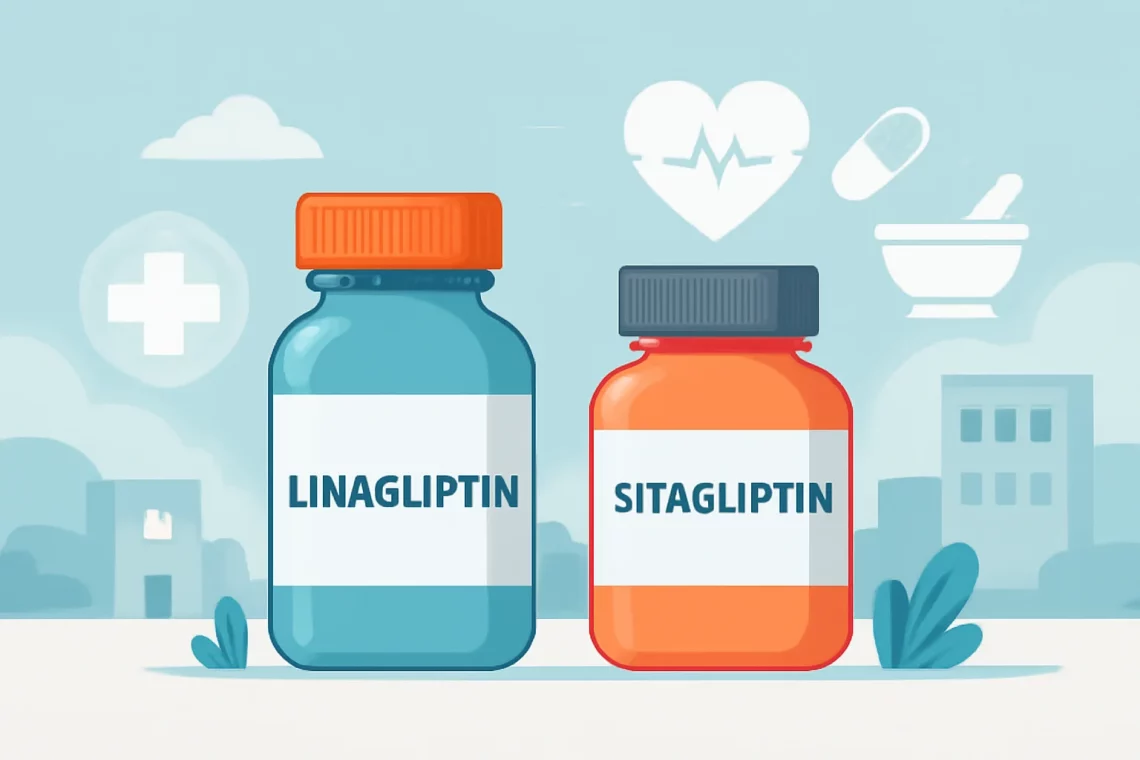
Linagliptin vs Sitagliptin: Which Diabetes Medication is Right for You?
Managing diabetes is a complex challenge that requires a multifaceted approach, including lifestyle modifications and, often, medication. Among the various pharmaceuticals designed to help control blood sugar levels, Linagliptin and Sitagliptin have emerged as popular options. Both belong to a class of medications known as DPP-4 inhibitors, which work by enhancing the body’s natural ability to lower blood sugar. As diabetes continues to affect millions worldwide, understanding the differences, benefits, and drawbacks of these medications is crucial for individuals looking to manage their condition effectively.
While both Linagliptin and Sitagliptin share similar mechanisms of action, they also have unique properties that may influence a patient’s choice between the two. Factors such as efficacy, side effects, dosing frequency, and potential interactions with other medications can all play a significant role in determining which medication is more suitable for a given individual. In this article, we will delve into the key aspects of these two medications to help you make a more informed decision regarding diabetes management.
Understanding DPP-4 Inhibitors
DPP-4 inhibitors are a class of oral medications that play a critical role in the management of type 2 diabetes. They work by inhibiting the enzyme dipeptidyl peptidase-4 (DPP-4), which is responsible for breaking down incretin hormones. These hormones are essential for regulating blood sugar levels as they stimulate insulin secretion from the pancreas in response to meals and reduce glucose production by the liver.
By blocking the action of DPP-4, these medications increase the levels of incretin hormones, leading to a more effective control of postprandial (after-meal) blood sugar levels. Consequently, patients may experience better glycemic control without the risk of significant weight gain, which is a common concern with other diabetes medications such as sulfonylureas or insulin.
Linagliptin and Sitagliptin are two prominent members of this class. While they share the same mechanism of action, they differ in several aspects, including their pharmacokinetics, side effects, and cost. The choice between them can depend on individual patient circumstances, including other medical conditions, potential drug interactions, and personal preferences regarding dosing schedules.
For instance, Linagliptin is primarily excreted through the intestines, which may make it a suitable option for individuals with kidney issues, as it does not require dosage adjustments in cases of renal impairment. On the other hand, Sitagliptin is predominantly eliminated by the kidneys, which means that dose adjustments may be necessary for patients with reduced renal function. Understanding these distinctions can significantly impact treatment choices and patient outcomes.
Comparative Efficacy of Linagliptin and Sitagliptin
When it comes to the efficacy of Linagliptin and Sitagliptin, both medications have demonstrated their effectiveness in lowering HbA1c levels, a key marker for blood sugar control over time. Clinical studies indicate that both drugs can lower HbA1c by approximately 0.5% to 1.0% when used as monotherapy or in combination with other antidiabetic agents.
However, some research suggests that Linagliptin may provide a marginally greater reduction in HbA1c levels in certain populations when compared to Sitagliptin. This could be attributed to the differences in the way each drug is metabolized and their respective impacts on insulin secretion and glucose production. It is also worth noting that individual responses to these medications can vary significantly, so what works for one patient may not necessarily work for another.
In addition to HbA1c reduction, both medications have shown beneficial effects on fasting blood glucose levels and postprandial glucose spikes. They also have favorable safety profiles, with a low risk of hypoglycemia—an important consideration for many patients. However, patients should be aware of the potential side effects associated with each medication, as these could influence overall adherence to the treatment plan.
Ultimately, the decision regarding which medication to use should be based on a comprehensive evaluation of the patient’s individual health status, including their overall metabolic control, lifestyle factors, and any coexisting medical conditions. Consulting with a healthcare provider is essential to determine the most appropriate treatment strategy.
Side Effects and Safety Profiles
Like all medications, Linagliptin and Sitagliptin come with a set of potential side effects. Understanding these can help patients make informed decisions about their diabetes management.
Common side effects associated with both medications include upper respiratory tract infections, headache, and gastrointestinal disturbances such as nausea or diarrhea. These side effects are generally mild and tend to resolve on their own without requiring discontinuation of the medication.
A more serious, but rare, side effect of DPP-4 inhibitors is the potential risk of pancreatitis. Both Linagliptin and Sitagliptin have been associated with cases of acute pancreatitis, although the overall incidence remains low. Patients should be vigilant for symptoms such as severe abdominal pain and should seek medical attention if these occur.
Another consideration is the risk of allergic reactions. While rare, some individuals may experience hypersensitivity reactions, including skin rashes or swelling, which necessitate immediate medical attention.
In terms of long-term safety, both medications have undergone extensive clinical trials, and ongoing post-marketing surveillance continues to assess their safety in broader populations. Overall, both Linagliptin and Sitagliptin are considered safe options for managing type 2 diabetes, particularly when used as part of a comprehensive treatment plan that includes lifestyle modifications.
Patients should always discuss potential risks and benefits with their healthcare provider to ensure a tailored approach that meets their specific health needs.
Cost and Accessibility
The cost of diabetes medications is an important consideration for many patients and can significantly impact adherence to treatment. Linagliptin and Sitagliptin may differ in price, depending on various factors including insurance coverage, pharmacy location, and the availability of generic versions.
As of now, Sitagliptin has a generic option available, which generally makes it more affordable for patients. On the other hand, Linagliptin is typically sold under its brand name, which can make it more expensive. Patients should speak with their healthcare providers or pharmacists about cost-effective options, including patient assistance programs or alternative medications that may fit within their budget.
Insurance coverage can also play a significant role in determining which medication is more accessible. Patients should verify their insurance plans to understand their co-pay responsibilities and whether either medication is preferred on their formulary list.
In some cases, healthcare providers may recommend a specific medication based on cost considerations, especially for patients with limited financial resources. It is essential for patients to communicate openly about their financial situation with their healthcare team to ensure they can access the medications they need to manage their diabetes effectively.
Ultimately, the choice between Linagliptin and Sitagliptin should consider not only the clinical efficacy and side effects but also the economic implications. A holistic approach to diabetes management takes into account the individual’s overall lifestyle, financial situation, and health goals.
This article is not intended as medical advice. Always consult with a healthcare professional for medical concerns and treatment guidance.




